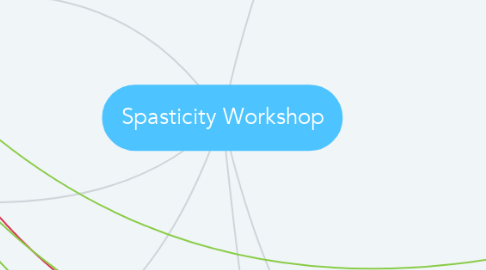
1. Logistics
1.1. Schedule simulation center
1.2. 4 hour block scheduled
1.3. AV equipment checked and ready for presentation
1.4. Botox simulators, needles, syringes, and vial kits ready
1.5. Coordinate faculty scheduled to participate in the workshop
2. Pre-Course Work
2.1. Pre-course multiple-choice exam
3. Post-course work
3.1. Post-course Multiple-Choice Exam
4. Smart Behavioral Outcomes
4.1. Cognitive
4.1.1. Recall indications, contraindications, complications, and goals of botulinum toxin injections, as evaluated by pre- and post-course multiple-choice question exam.
4.1.2. Identify the anatomical location of the key muscles in the upper and lower extremity on a simulated patient, as evaluated by direct observation by faculty using the performance checklist for muscle identification.
4.2. Psychomotor
4.2.1. Demonstrate the ability to proficiently reconstitute botulinum toxin, as evaluated by direct observation by faculty using the performance checklist for botulinum toxin reconstitution.
4.2.2. Demonstrate the ability to accurately inject botulinum toxin into key muscles in the upper and lower extremity on a simulated patient, as evaluated by direct observation by faculty using the performance checklist for injection.
4.3. Affective
4.3.1. Discuss the advantages and disadvantages of botulinum toxin injections for the management of spasticity, as evaluated by the faculty using the discussion participation rubric.
4.3.2. Reflect on how accurate botulinum toxin injections can influence patient goals to overcome disability and improve quality of life, as evaluated by the faculty using the rubric for written reflection.
5. Content
5.1. Large group interactive case discussion led by primary facilitator highlighting indications, contraindications, complications, and goals of botulinum toxin injections
5.1.1. Large group demonstration of botulinum toxin reconstitution
5.1.2. Individual practice reconstituting botulinum toxin.
5.1.3. Reconstitution of botulinum toxin with direct observation by faculty using the performance checklist for botulinum toxin reconstitution
5.2. Individual instruction utilizing the upper and lower limb botulinum toxin simulator to identify the anatomical location of the key muscles in the upper and lower extremity.
5.2.1. Individual identification of key muscles in the upper and lower extremity with direct observation by faculty using the performance checklist for muscle identification.
5.3. Individual instruction injecting botulinum toxin into key muscles in the upper and lower extremity on a simulated patient.
5.3.1. Individual injection of botulinum toxin into key muscles in the upper and lower extremity on a simulated patient with direct observation by faculty using the performance checklist for injection.
